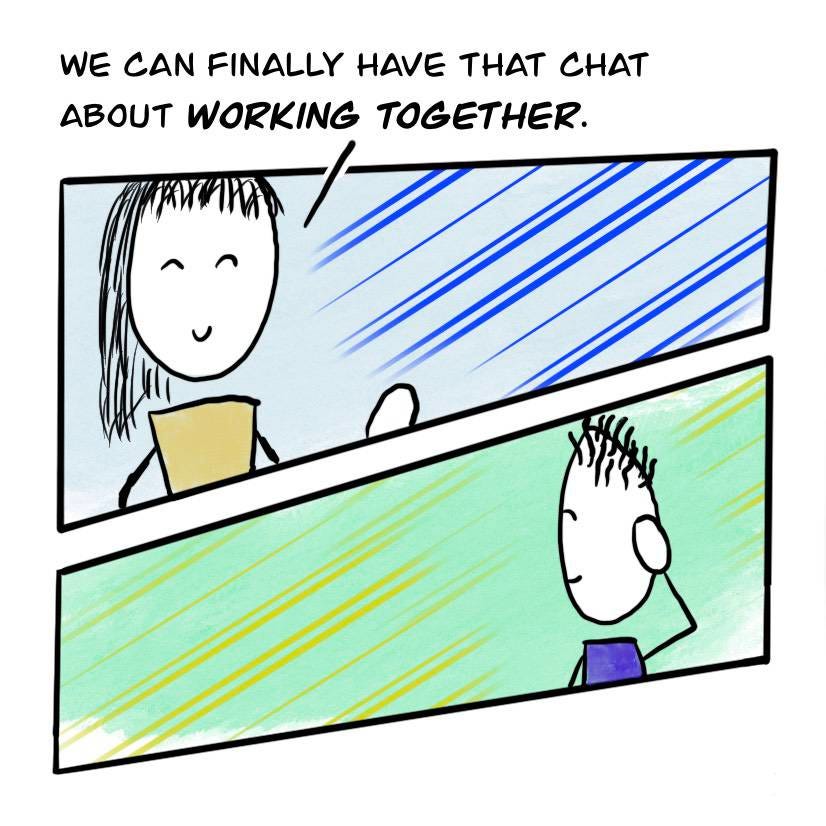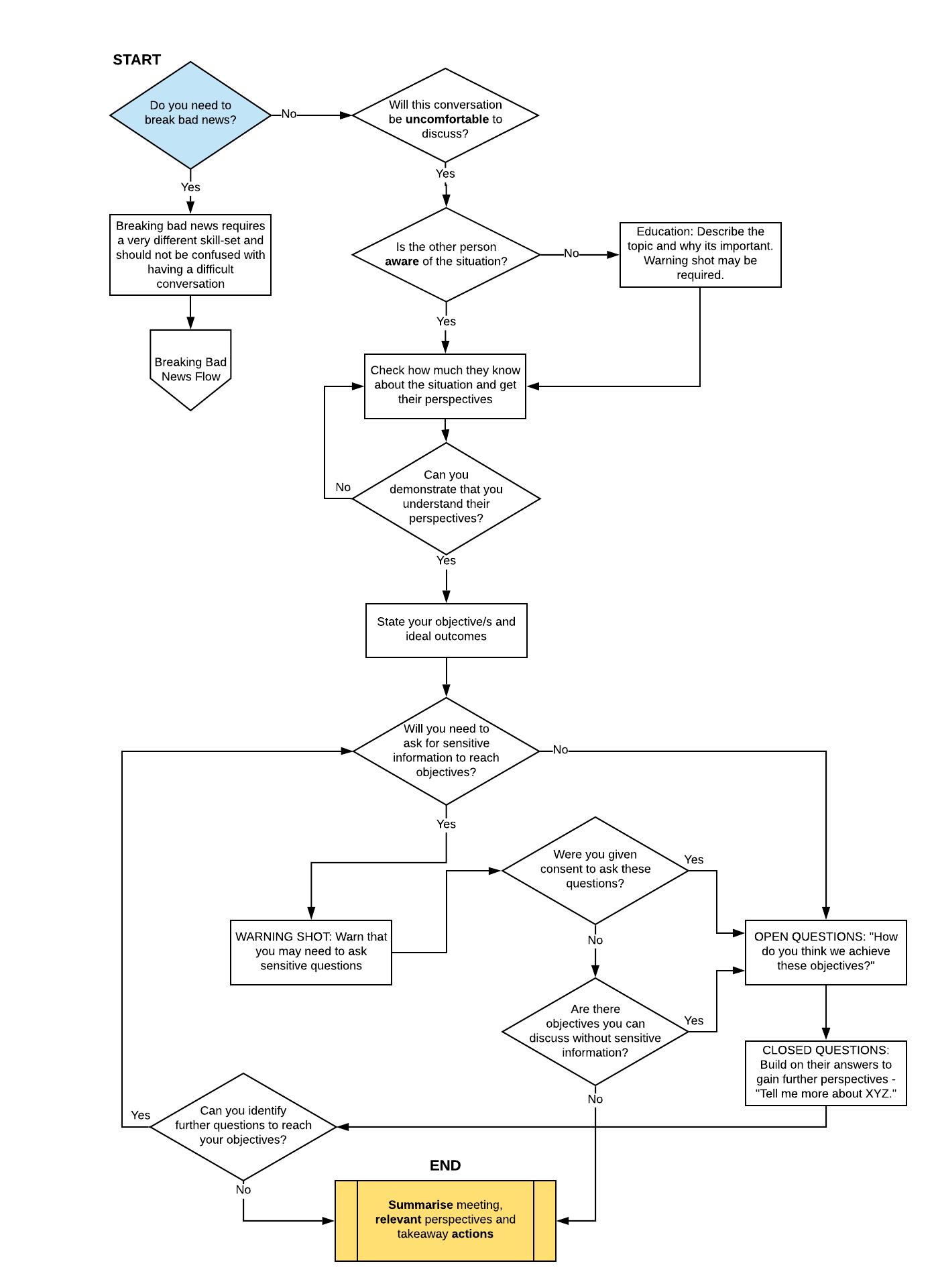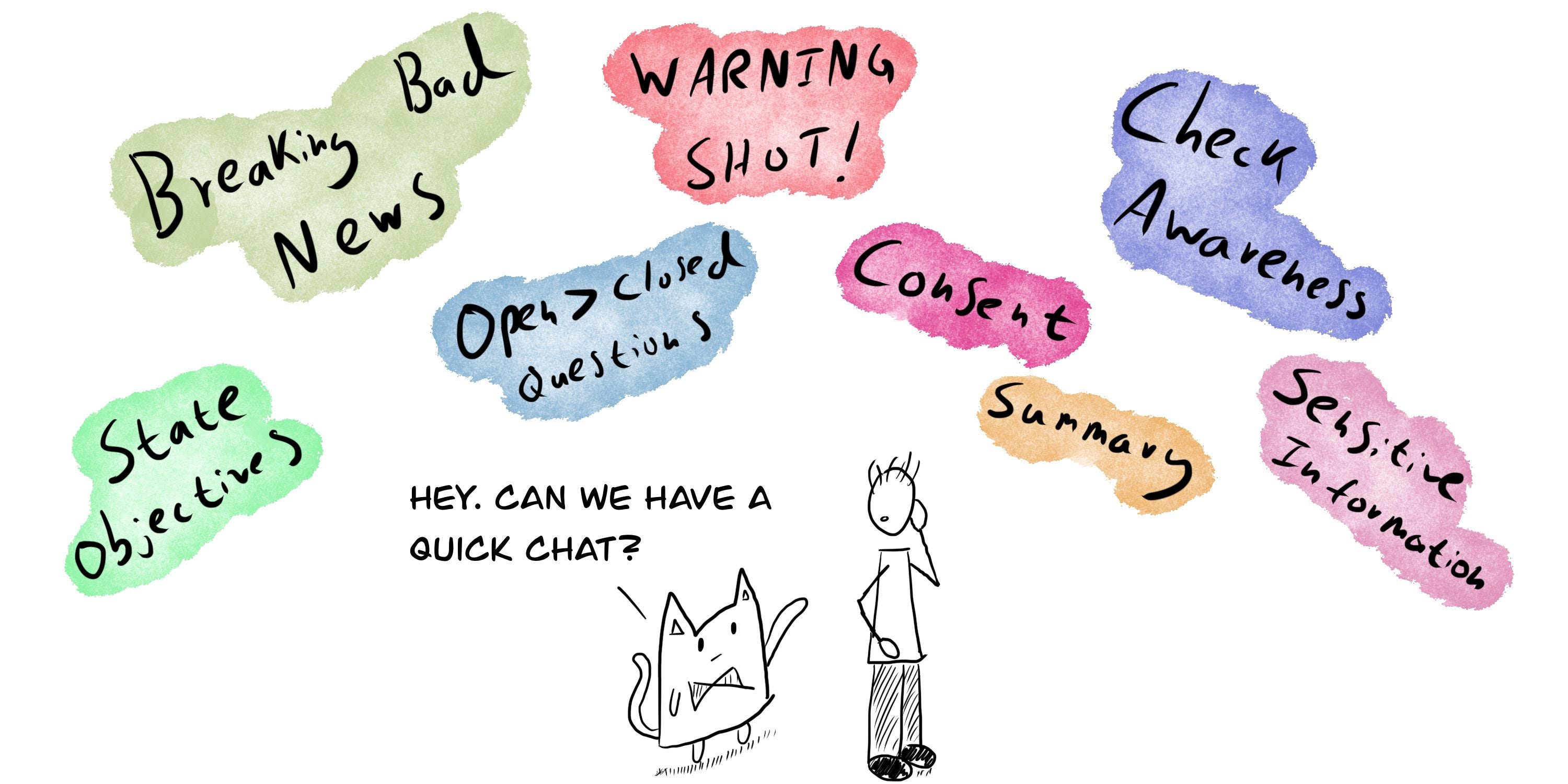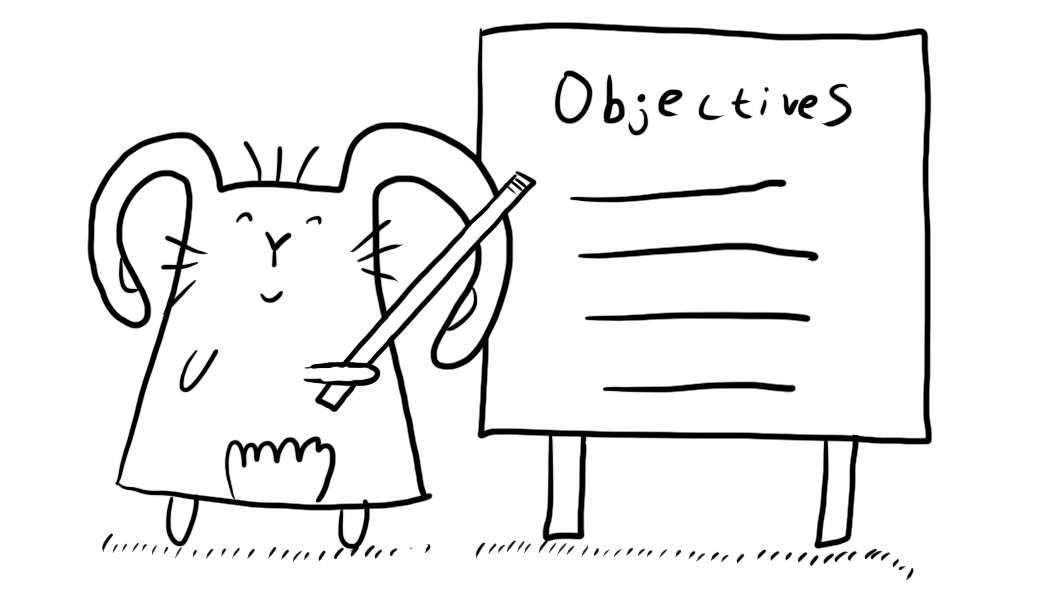How I structure difficult conversations that help my team build products and tackle internal politics.
Sometimes being a product manager can be emotionally exhausting. Have you ever needed to do the following:
- Have a necessary yet uncomfortable conversation with an engineer/designer to resolve a problem with your product
- Discuss collaboration issues with marketing/sales
- Ask for strategic information somebody does not wish to disclose?



If so, you’ll know it’s difficult because these conversations can be personal, confrontational, emotionally draining and risk harming our professional relationships. If somebody is challenging to work with or won’t budge over a critical flaw, product managers usually need to find solutions without being able to resolve to the carrot of promotion or stick of firing.
Some people resolve this by ignoring these discussions entirely, or worse, unintentionally communicate in a way that turns an awkward encounter into a downright unpleasant one. It doesn’t have to be this way.
In this post, I will share my experiences of how I plan, structure and deliver conversations that turn tricky discussions into respectful and productive collaborations.
As a general disclaimer, techniques that leverage emotional intelligence can be easily abused and need to be applied sincerely and respectively. People will remember if you conscientiously manipulated them. Help make the world a better place — practice beneficence, not maleficence.
Just The Cheat Sheet Please
Whether you want to get a quick overview of the topics discussed in this post or check against your conversation techniques, please find a flow chart below, highlighting the most significant points.

Try not to use this as a negotiation tactic (there are plenty of good books written about that already). Instead, this should read as an exercise in emotional intelligence to help you develop mental models of conversation that strengthen relationships.
If you want to learn more about specifically breaking bad news I wrote about it here.
8 Pointers for Having a ‘Difficult Conversation’
The following pointers are based on personal experiences working previously as a physician and now a product manager, as well as some academic research for good measure (Baile and Buckman (2000)).
Attempt to plan and respect the people with whom you are having a conversation. Watch and listen to them at all stages and be responsive to their wishes and reactions.

1. Are you Breaking Bad News or having a Difficult Conversation?
Breaking ‘Bad News’ and having ‘Difficult Conversations’ can be viewed as two sides of the same coin. They both make us feel uncomfortable and employ similar techniques for resolving.
When delivering ‘Bad News’, you need to make a statement with usually non-negotiable outcomes. Examples include things like telling somebody they are getting fired, being disciplined or reporting poor performance (product managers, unless senior are unlikely to find themselves in this situation).
A ‘Difficult Conversation’ is far more common. It is an awareness of potential collaborative tensions during a discussion to achieve a goal, but the best path forward has not been decided. The first represents consequence and the latter an opportunity.
Before your discussion, think about which type of conversation you are having and proceed accordingly.
2. Check Awareness and Perception
For a productive, collaborative meeting, you will need to ensure the other person/team has sufficient information to make informed contributions.
If there are existing inter-personal tensions over a topic, it can be a good idea to acknowledge these openly and gauge the other person’s response. Listen for buried questions and invite inquiries.
- What do they make of the situation so far?
- What are their concerns?
- What is their reaction to discussing the topic?
- Do they understand why we are discussing this topic?
The style and emotional content of a persons response can provide a wealth of information. Observe terms used or avoided, tone of voice and non-verbal cues. These can help inform you of the level of understanding and to begin information-giving at the same level.
3. Give a Warning Shot
People respond far better when you can reduce the shock of the disclosure.
Depending on the other person’s level of understanding, they may or may not be ready for the bombshell conversation you are about to drop. In medical practice, we call this the warning shot, and in my experience, it is one of the most humane ways to start discussing a difficult topic.
It works like this — before starting, let the other person know you are about to have an awkward conversation about ‘Subject X’.
- “I need to talk with you about a difficult subject today.”
- “I’m afraid I need to discuss something today that you are not going to enjoy.”
- “As you know, we have been trying to achieve this goal, but I have some bad news about our progress.”
This statement should be followed by a pause to allow for acknowledgement and any urgent questions. Look for cues signalling that you can progress with the conversation. After the warning shot, consider presenting any new information in the following way:
- Provide information in small chunks
- Avoid jargon
- Check reception and offer clarification if needed — “Am I making sense?”
- Repeat important points
- Listen to concerns and demonstrate your understanding (covered later)
4. Show You Understand Their Perspective
If a problematic situation has different facets of conflict, which may impede a resolution, it can be useful to acknowledge these openly before getting into further discussions.
You can use this acknowledgement to gauge the response of the other person and validate what the most prominent issues are. Perhaps things are not as bad as you feel or you missed something else entirely.
Don’t make assumptions about what the person might be feeling. Encourage them to express their interests and respect their wishes about how much information they want to hear.
5. State Your Objectives
Going into a meeting, you should ideally have already thought about the main objectives you aspire to achieve. For a ‘difficult conversation’, you need to accept that you may not meet any of your goals. The action of starting the conversation may be enough for now.

If you think its right to proceed, consider the following outcomes types:
- Do you want a decision?
- Do you want to generate ideas?
- Are you getting status reports?
- Do you need to communicate something specific?
- Are you making plans?
Having gone through the previous steps, and internalised the perspectives of person/team sitting across the table, you can now start gauging how to proceed.
- Do I need to modify how I present my objectives?
- Do I need to reprioritise any goals? Maybe focus on just one?
- Are there objectives that require a separate discussion?
6. Sensitive Information and Consent
Sometimes you may need to ask sensitive questions to proceed with a conversation. Maybe you need to ask about personal views on a subject or simply check the other person is happy to continue the discussion.
Doing this can be as simple as asking “Are you happy to discuss this?”, or you can combine it with a warning shot, “I understand this can be a sensitive topic, would you be happy for me to ask about thoughts on the subject?”.
Catching your conversation partner off guard (even unintentionally) with uncomfortable questions can be counterproductive and put them on the defensive.
7. Question Strategy
Starting with an open-ended question and advancing with progressively more closed questions is a classic consultation strategy.
Open-ended questions help prompt conversations because they are not easy to answer with one-word statements. Examples of open-ended questions include:
- Where do you want to be in five years?
- What are your main goals currently?
- Did you find this conversation helpful?
In our case, once all objectives are acknowledged, you can supercharge this question by asking “How do you think we can reach these goals?”. This will provide insights into how the rest of this discussion is likely to play out — are you going to move into resolution planning or are there more questions to be answered.
Listen for relevant ques in answers given, and follow up with questions focusing on specific points, also known as closed-questions:
- “Tell me more about that specific thing.”
- “Why are things that way?”
Asking a closed-ended question does not necessarily mean it has to the be “yes” or “no” answer. You should see this more as a gradual process of starting with broad open-questions then gradually asking more specific closed-questions.
Remember, you are not running through a script here. Use a mixture of open and close-ended questions to get a conversation started or back on track.
8. Summarising
Summarising is the most easily forgotten part of any meeting. You can have as little as 30 seconds to do this, so it is always good to practice this skill. Try the following:
- List out the most crucial problems identified
- Summarise any important discussion points
- Explain the next steps and what you expect to happen
- Invite questions
After your tough conversation, take a short break. It can be quite emotionally challenging, so take this time to examine your thoughts, and reflect on how you’re feeling. Speak with a colleague or friend if it helps.
Now that you know how to structure a ‘Difficult conversation’ at work, you’re ready to start having more productive discussions and creating a positive work environment without worrying about risking your professional relationships.
It’s possible to turn these situations into fantastic opportunities to learn, make alliances and advance your career. So go out there and practice what resonated with you here.
Even if it is just a hallway conversation, that’s a great start. Help build a better world while also helping yourself.
“The fastest and most efficient means of establishing a quick working relationship is to acknowledge the negative and diffuse it.” — Chris Voss